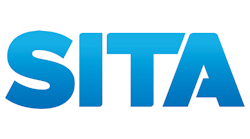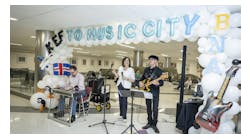Even before the latest headlines about airport security wait times appeared, air travelers in the U.S. ranked time-consuming security and baggage procedures as the top areas for improvement. In recent weeks, long lines at airports have caused some 70,000 missed flights – with passengers now being advised to arrive three hours in advance for domestic travel. In one scenario, almost 500 people were stranded at Chicago's O'Hare International Airport, requiring the provision of cots.
These waits have been attributed to a combination of more people flying, new security measures and not enough screeners. The TSA says it will have 768 new screeners in place by mid-June and recent reports have mentioned that a new security conveyor belt currently being piloted in Atlanta will roll out more widely if that test proves successful.
These and other tactics proposed by the TSA as part of its recently announced 10-point plan to reduce airport security wait times are important steps. But they are only the beginning. With summer flight fares expected to hit a seven-year low and a projected 8 percent increase in passengers traveling by air, no solution can come too soon.
But the battle is still uphill – and more needs to be done to ensure that not just the symptoms are being treated, but the core problems too. One way to do this is to focus more attention more quickly on one aspect of the TSA’s proposals in particular – research and development into technology that can significantly help increase passenger flow through security.
From check-in to passport control, technology has been proven to streamline the passenger journey at multiple points while simultaneously improving the passenger experience. In fact, passenger satisfaction with technology is already extremely high – they prefer using technology rather than interacting with people and are least happy when they are not given choice and control. The 2016 Passenger IT Trends Survey found a majority of passengers are already using a self-service option – online, kiosk or mobile – to check in. And of these, 91 percent will do so again and again. Passengers experience the most negative emotions during the security screening, passport control and baggage collection steps of the journey, peaking at nearly one third of passengers at security. These are also the steps with the least number of self-service technology options.
To manage passenger flow through terminals more efficiently, many airports use, or have plans within the next three years to deploy, sensor technologies such as beacons to gauge the movement of people at critical points in their journey to the gate. Currently, the most common place for these sensors is at the security checkpoint – with 17 percent of airports having already deployed and another 44 percent planning to by the end of 2018. Others are looking at single token authentication such as facial recognition technology which recognizes passengers at every step of their journey from check-in to boarding.
Speaking at the 2016 Air Transport IT Summit in Barcelona, Denver International Airport CIO Robert Kastelitz said the airport is currently conducting a proof of concept as part of a larger business intelligence initiative that leverages beacons to analyze and predict TSA wait times. Orlando International Airport is testing similar technology to provide the airport with a real-time view of TSA checkpoints, as well as historical wait-time data to establish wait-time profiles for different times of the day, days of the week and seasons.
Recent news reports suggest that some quick fixes are bringing a degree of relief. But the focus needs to remain on long-term solutions and attending to problems and not just symptoms. Technology can and should be a major part of the strategy.
Randy Pizzi is president, Americas for SITA.





